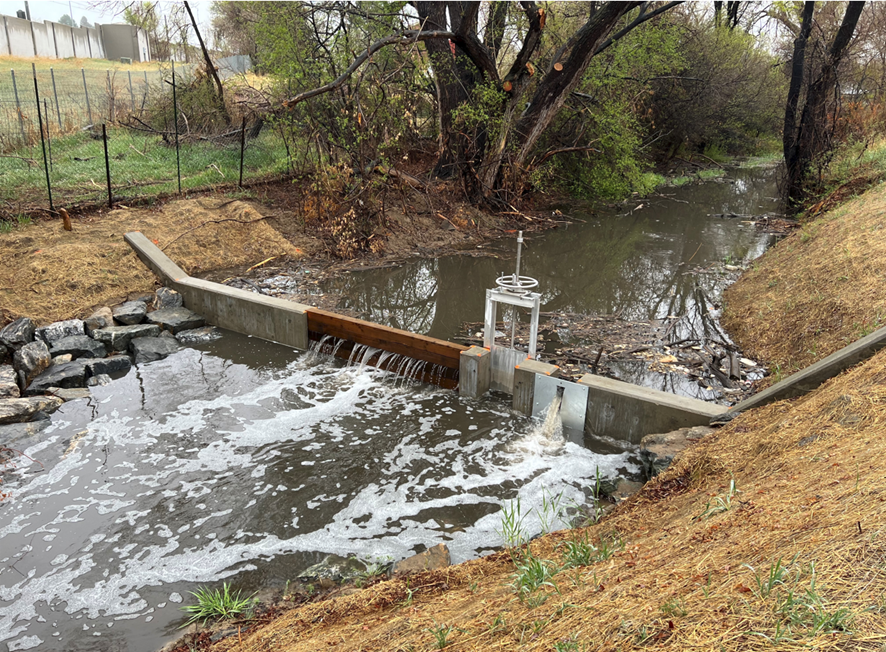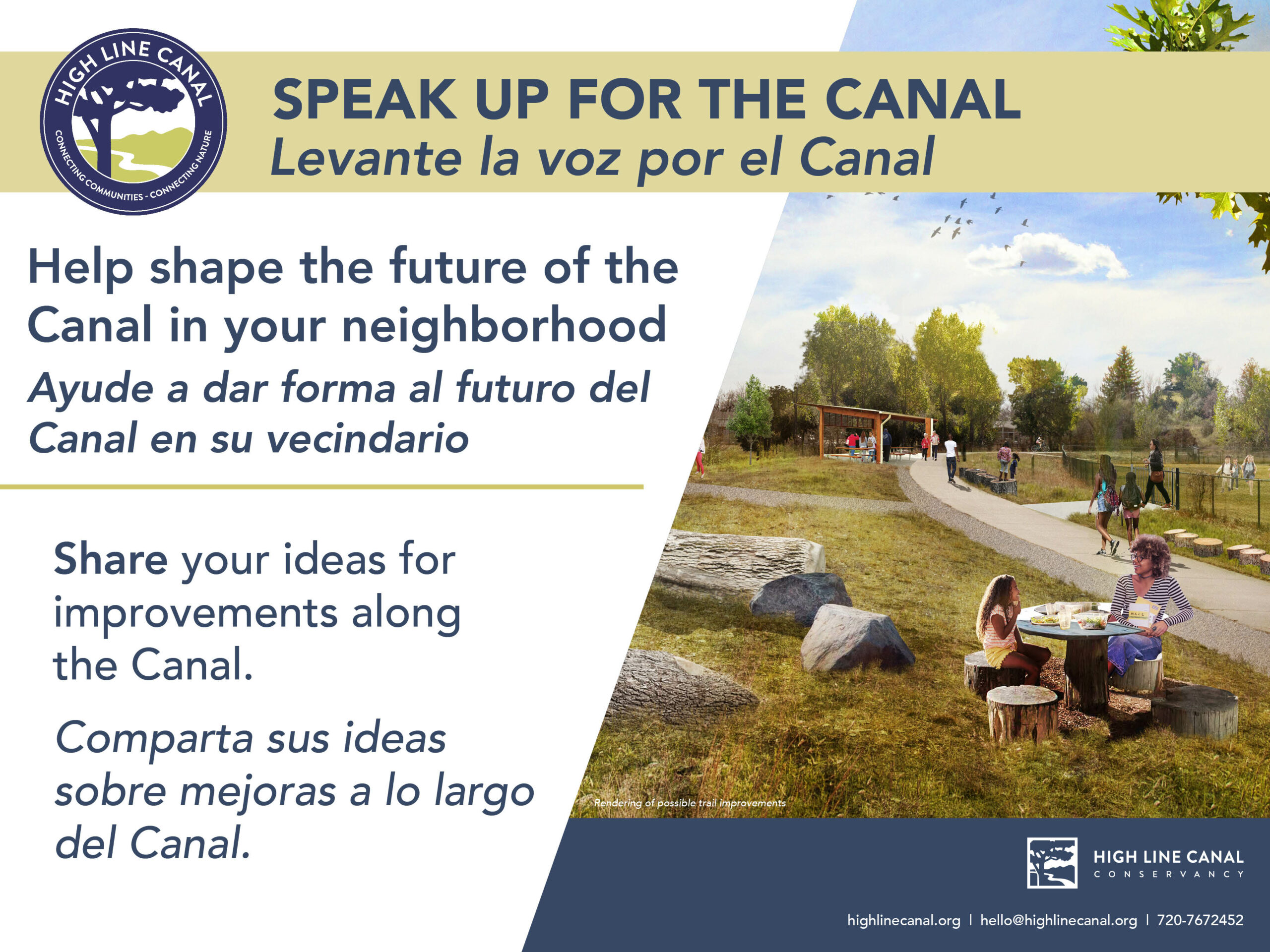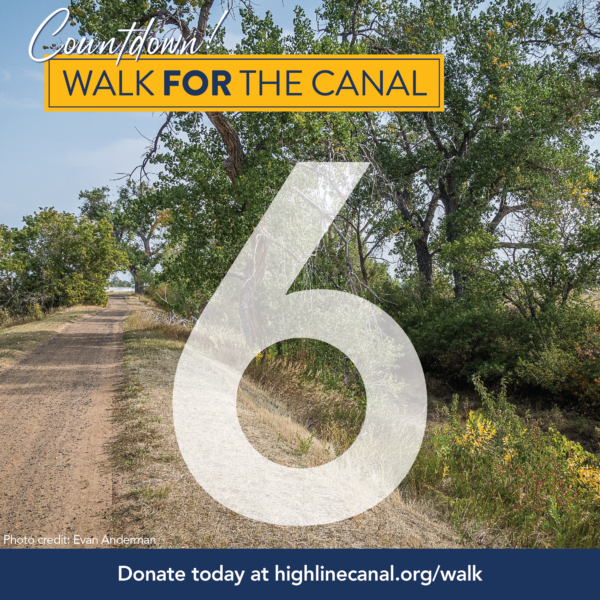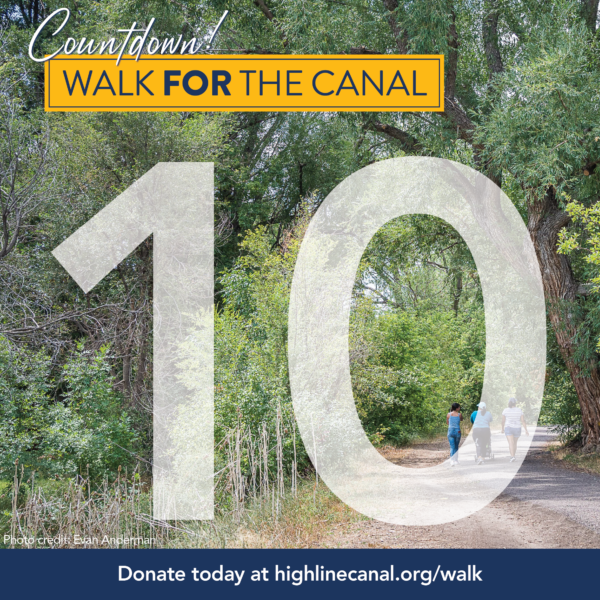Happy World Water Day! Today is the 30th annual World Water Day, a day of observance organized by the United Nations to promote awareness and inspire action for the world to unite around water. As water becomes increasingly scarce in the region, the Conservancy and our partners are working to steward the Canal through its transition from irrigation utility to green stormwater infrastructure, urban ecological corridor and regional recreational trail.
STEPping into a new future for water in the Canal
The Stormwater Transformation and Enhancement Program (STEP) will bring new life and renewed utility to the High Line Canal as a green infrastructure system. Utilizing the Canal as green infrastructure provides a host of environmental, social and economic benefits. The Conservancy is working with Denver Water, the Mile High Flood District and local jurisdictions through STEP to advance the Canal’s function as a stormwater management system. So far, 12 miles of the Canal have been formalized for stormwater management, with projects in Mirabelle Metro District, Douglas County, Littleton, Centennial, Greenwood Village, and Denver.
Utilizing the Canal as green stormwater infrastructure provides an opportunity to improve water quality while supporting the Canal’s ecosystem. Stormwater runoff is a significant cause of environmental degradation of our waterways. As stormwater drains toward waterways, it can pick up contaminants, polluting the runoff and negatively impacting water supplies, recreation areas, fisheries and wildlife. Managing stormwater with green infrastructure can significantly reduce these negative effects while also decreasing the risk of flooding.
Green stormwater infrastructure systems, like the Canal, slow down stormwater runoff and improve water quality. The Canal’s soil and vegetation naturally remove many pollutants found in stormwater runoff, resulting in cleaner water for our natural waterways. By promoting infiltration and pollutant filtration, utilizing the Canal as green infrastructure may improve stormwater quality by 40% before it enters rivers and creeks.
Managing stormwater in the Canal also benefits the corridor’s flora and fauna, supporting both established vegetation and newly planted trees along the Canal banks. In reaches of the Canal that hold stormwater, the Conservancy is piloting the planting of native riparian trees near the base of the Canal channel. Native trees help support the ecological health of the corridor, providing habitat for a diverse array of pollinators, birds and mammals. By planting the trees on low shelves near the Canal channel, the Conservancy aims to capitalize on stormwater as a resource for the next generation of native trees along the Canal.
How can I get involved?
Everyone can take action to support a more resilient future for our region’s water. Visit https://www.unwater.org/bethechange/ to learn how you can make a difference. Here are some actions you can take with the Conservancy:
-
- Be curious and visit our STEP page to learn more about the Canal’s stormwater transformation
- Protect nature by supporting our tree planting program
- Clean up by joining the Canal Conservation Corps and helping to steward our regional greenway








